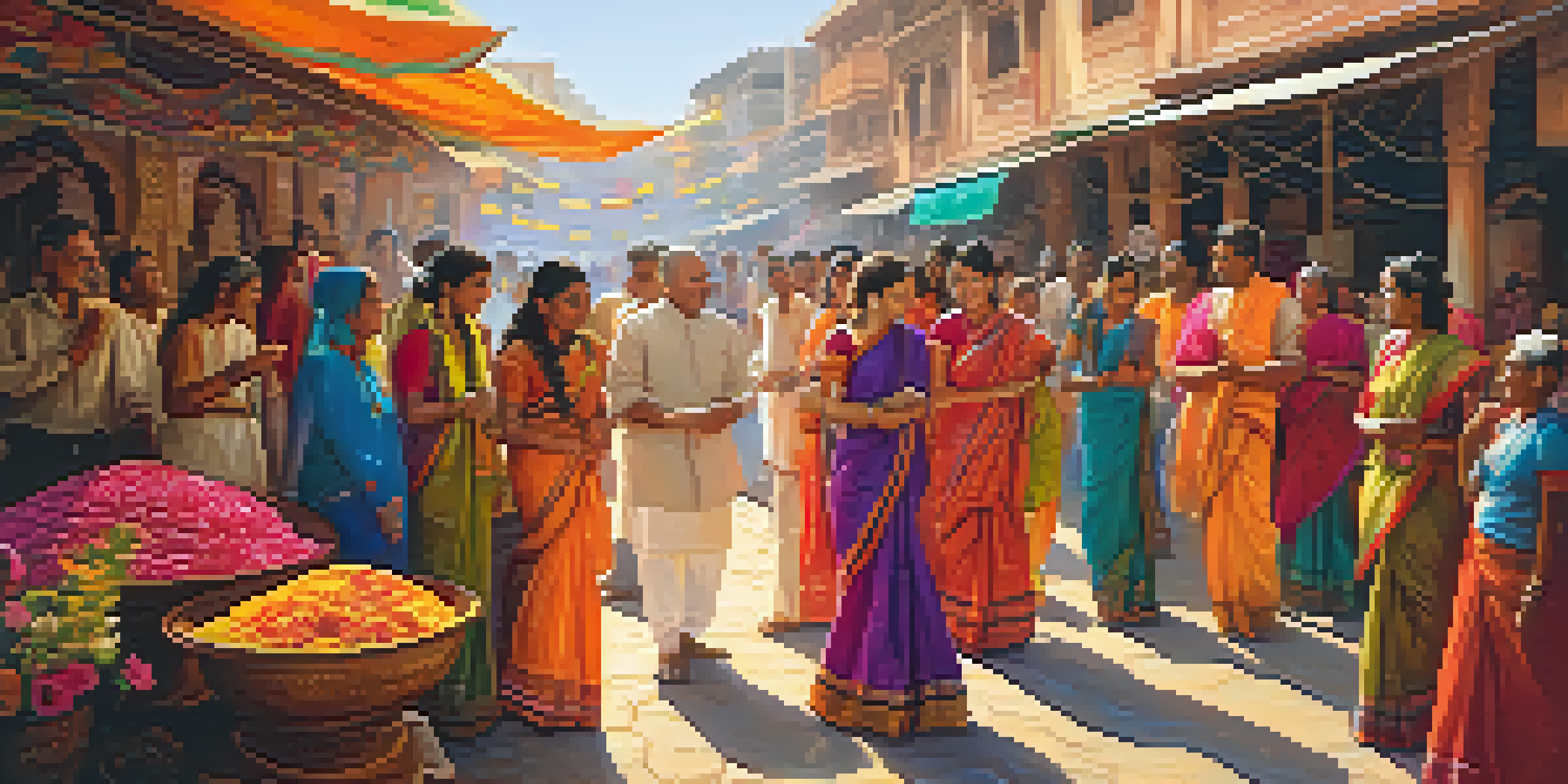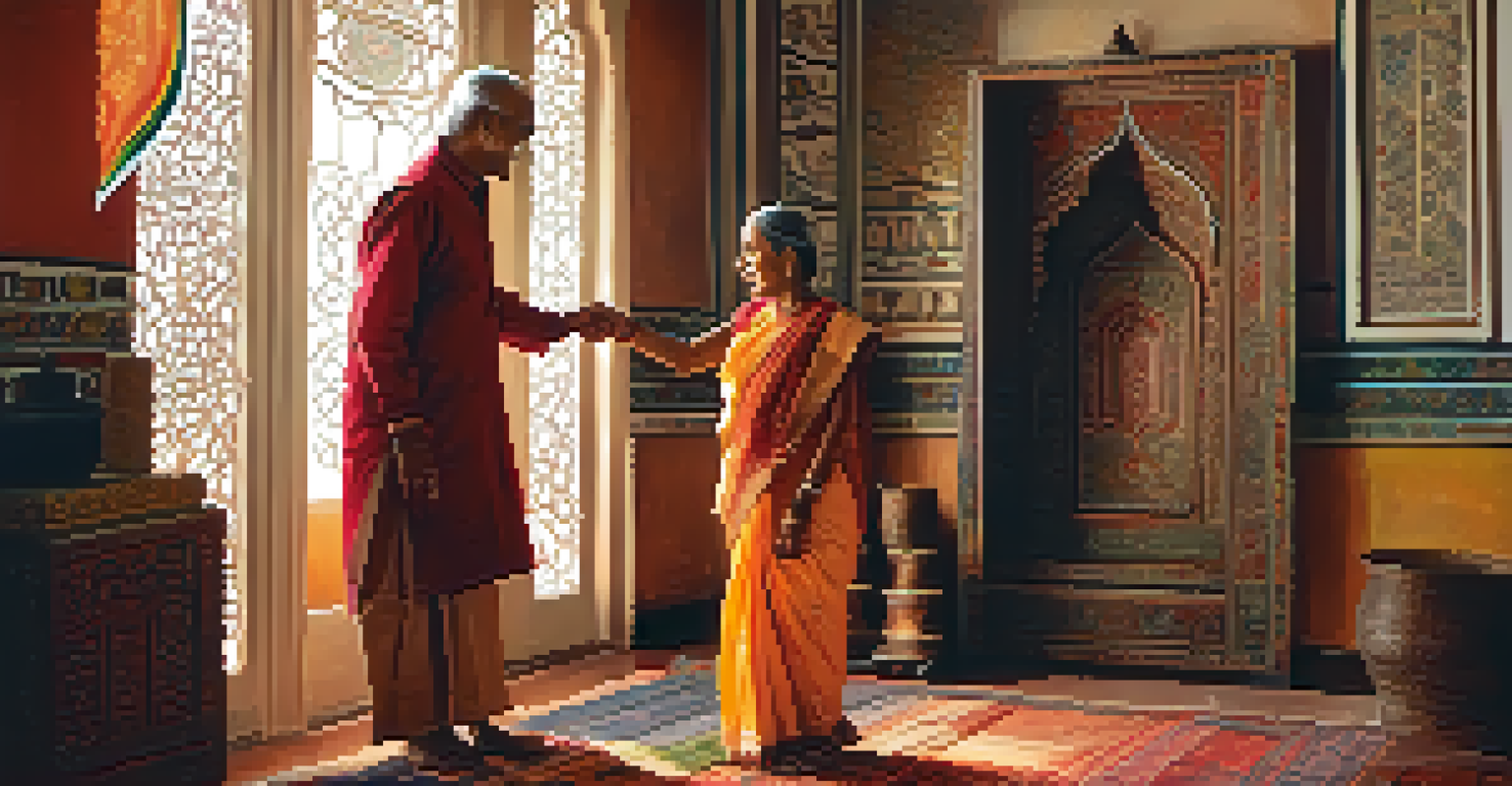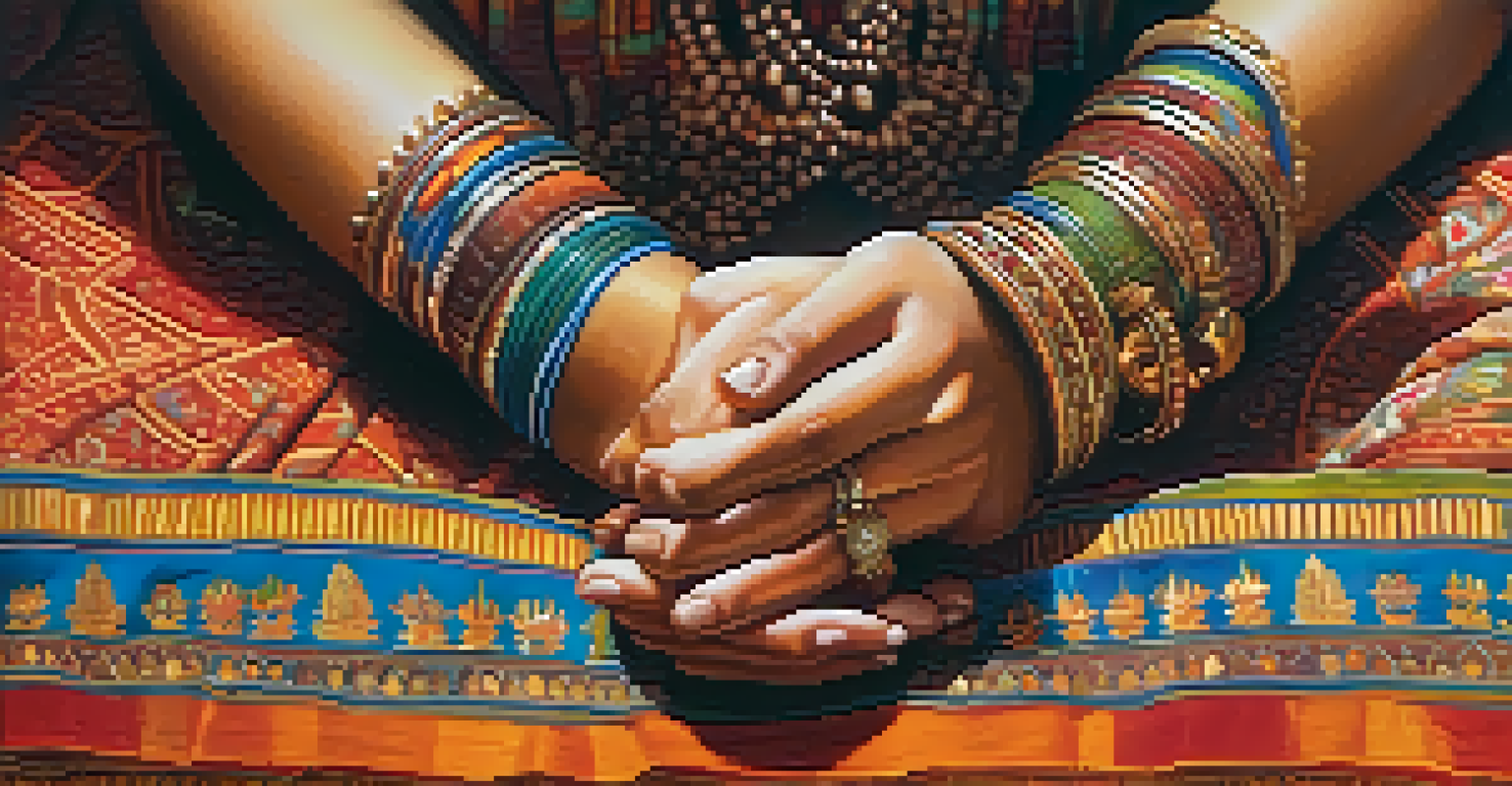Understanding Indian Greetings: Dos and Don'ts for Visitors

The Importance of Greetings in Indian Culture
In India, greetings are more than just a way to say hello; they are a reflection of respect and hospitality. When you arrive in a new place, the way you greet people can set the tone for your entire interaction. It’s fascinating how a simple gesture can convey warmth and openness, making you feel more connected to the local culture.
A simple greeting can be the start of a beautiful relationship.
In many Indian communities, greetings often involve physical gestures, such as folding hands in a 'Namaste' or a light touch on the feet of elders as a sign of respect. These customs highlight the importance placed on relationships and social harmony. As a visitor, understanding these nuances can enhance your experience and help you forge meaningful connections.
Moreover, using the appropriate greeting can demonstrate your appreciation for Indian traditions. This small act can go a long way in making locals feel valued and respected, and it opens the door for more engaging conversations and shared experiences.
Common Indian Greetings to Know
One of the most recognized greetings in India is 'Namaste,' which involves placing your palms together and bowing slightly. This gesture conveys a sense of respect and acknowledges the divinity in the other person. It's widely used across the country, making it a safe choice for visitors looking to greet anyone from friends to strangers.

Other common greetings include 'Satsriakal' in Punjab and 'Vanakkam' in Tamil Nadu. Each region has its unique ways of expressing hello, often accompanied by specific gestures or body language. Learning these phrases can show your interest in the local culture and make a positive impression.
Greetings Reflect Respect in India
In Indian culture, greetings go beyond mere words; they embody respect and hospitality, influencing social interactions.
Additionally, it's worth noting that 'hello' is also widely understood in urban areas, especially among younger generations. However, incorporating traditional greetings can enhance your interactions, demonstrating that you respect and appreciate the local customs.
When to Use Formal vs. Informal Greetings
Understanding when to use formal versus informal greetings is essential for navigating social situations in India. Formal greetings are often reserved for elders, superiors, or in professional settings. Using a respectful tone and traditional greetings can set a positive tone for your interactions.
The way we greet others reflects our attitudes and values towards them.
On the other hand, among peers or younger individuals, informal greetings can be more relaxed. A simple 'Hi' or 'Hello' might suffice, but pairing it with a smile or a handshake can enhance the friendliness of your approach. This flexibility allows you to adapt to various social contexts seamlessly.
Recognizing the difference between these greetings is crucial. It not only shows respect for social hierarchies but also helps you blend into different social circles, making it easier to connect with a diverse range of people.
The Role of Body Language in Indian Greetings
In India, body language plays a significant role in greetings. While verbal greetings are important, how you carry yourself can convey just as much meaning. For instance, maintaining eye contact demonstrates sincerity and interest, while a warm smile can instantly put others at ease.
Moreover, the physical distance during greetings can vary. Personal space norms differ across cultures, and in India, people might stand closer during interactions. Being aware of these subtle cues can help you navigate social situations more comfortably and avoid any unintentional discomfort.
Regional Variations Enhance Connectivity
India's diverse regions have unique greetings, and learning them fosters deeper connections and appreciation for local customs.
It's also essential to be mindful of gestures that might be considered inappropriate. For example, pointing with one finger or using your left hand for greetings can be seen as disrespectful in some contexts. Understanding these body language nuances can make a significant difference in how you are perceived.
Cultural Sensitivity: What to Avoid in Greetings
As a visitor, it's crucial to be aware of cultural sensitivities regarding greetings in India. One of the primary things to avoid is using your left hand to greet someone, as it is considered unclean in many cultures. Instead, use your right hand or both hands in a gesture like 'Namaste' to show respect.
Additionally, avoid overly casual greetings with elders or in formal settings. Joking or using slang can come off as disrespectful, so it's better to err on the side of caution. Observing how locals interact can provide valuable insights into what is deemed appropriate.
Lastly, avoid rushing through greetings. Taking a moment to genuinely engage with someone can show that you value the interaction. This small effort can foster goodwill and open doors to deeper conversations and connections.
Regional Variations in Greetings Across India
India is a vast country with diverse languages and cultures, leading to regional variations in greetings. For example, in the northern states, you might hear 'Namaste,' while in the south, 'Vanakkam' is more common. Each greeting carries its unique flavor, reflecting the local customs and traditions.
In addition to language differences, the manner of greeting can also vary. In some regions, people may prefer a firm handshake, while in others, a gentle nod or bow might be more appropriate. Understanding these variations can enhance your ability to connect with locals across different states.
Body Language is Key in Greetings
Understanding body language, such as maintaining eye contact and respecting personal space, is crucial for meaningful interactions in India.
Embracing these regional distinctions can be both fun and educational. It allows you to appreciate the richness of Indian culture and encourages deeper interactions with people from various backgrounds.
Practicing Your Indian Greetings
The best way to master Indian greetings is through practice. Try using greetings in everyday situations, whether at a local market, restaurant, or while exploring cultural sites. This not only helps you remember the phrases but also boosts your confidence in using them.
Engaging with locals can provide valuable feedback on your pronunciation and gestures. Most people appreciate when visitors make an effort to learn their customs, and they will likely be more than happy to help you refine your skills. This interaction can lead to memorable exchanges and may even spark friendships.

Additionally, consider watching videos or attending cultural workshops to familiarize yourself with the nuances of Indian greetings. The more you immerse yourself in the culture, the more natural these greetings will feel, allowing you to connect authentically with the people you meet.